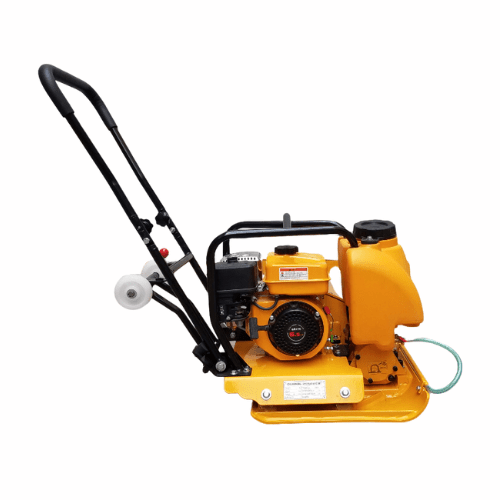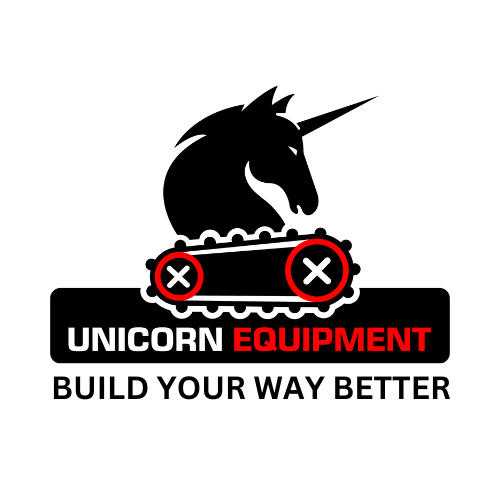Plate Compactor

Plate Compactor
A plate compactor is an essential construction tool designed for the compaction of soil, gravel, paving stones, and asphalt. This equipment is pivotal in creating a stable and level ground, ensuring the foundation’s longevity and durability for various construction projects, from creating driveways and sidewalks to laying the groundwork for large buildings. Operated by a single individual, it use a heavy, flat plate that vibrates with significant force. This vibration reduces the size of the particles in the material being compacted, removing air gaps and creating a tightly packed surface that enhances stability and resistance to future shifts or settlements.
The versatility of compactors, available in various sizes and compaction forces, makes them suitable for both small-scale garden projects and larger construction tasks. Powered by either gasoline or electric motors, these machines can efficiently cover large areas quickly, saving time and labor costs. With advancements in design, modern plate compactors also focus on reducing operator fatigue through better ergonomics and vibration control. This tool is indispensable in the construction industry, symbolizing the blend of mechanical innovation and practical application to achieve the foundational strength of construction projects.
Key Features of Unicorn Equipment Plate Compactor
Efficient Soil Compaction: Compaction equipment, including petrol plate compactors, efficiently compresses soil particles, reducing voids and enhancing soil stability. This process is crucial for ensuring the longevity and durability of structures built on the compacted ground.
Versatility: Petrol plate compactors can handle a wide range of materials, including soil, gravel, sand, and asphalt. This versatility makes them suitable for various construction projects, from roadworks to landscaping.
High Power: Equipped with powerful petrol engines, it generate significant centrifugal force, allowing them to achieve deep and effective compaction even in challenging terrain.
Ease of Operation: Despite their power, modern compactors are designed for ease of use. Ergonomic handles, intuitive controls, and smooth operation make them accessible to both seasoned professionals and novice users.
Portability: Compact and maneuverable, petrol plate compactors are easy to transport to and around job sites. Their mobility ensures efficient compaction across different areas of a project site.
Description of Petrol Plate Compactor
It is a robust and reliable machine designed to deliver superior compaction performance in various construction applications. Below are the specifications of a typical petrol plate compactor:
Body Material: Constructed from durable iron, ensuring longevity and resistance to wear and tear even in demanding working conditions.
Color: Vibrant yellow finish for high visibility, promoting safety on busy job sites and enhancing the machine’s aesthetic appeal.
Plate compactors offer a multitude of advantages in various construction and landscaping applications:
- Efficient Compaction: Use high-frequency vibrations to quickly and effectively compact soil, gravel, asphalt, and other materials. This efficiency saves time and labor compared to manual compaction methods.
- Increased Stability: By compacting the ground thoroughly, compactors create a stable and solid foundation for structures, roads, sidewalks, and other surfaces. This stability helps prevent settling, shifting, and structural damage over time.
- Improved Surface Quality: Compacted surfaces have a smoother and more uniform finish, enhancing the aesthetics of driveways, pathways, and other paved areas. This quality also improves the functionality of surfaces by reducing trip hazards and improving traction.
- Cost-Effectiveness: They are cost-effective tools that offer significant savings in terms of labor, time, and material costs. Their efficiency allows for faster project completion, reducing overall expenses.
- Versatility: They come in various sizes and configurations to suit different compaction needs. They can be used in a wide range of applications, from compacting granular soils to finishing asphalt surfaces.
- Easy Operation: Plate compactors are typically easy to operate, requiring minimal training for users. They are designed with user-friendly controls and ergonomic features to reduce operator fatigue and improve productivity.
- Portability: Many plate compactors are compact and lightweight, making them easy to transport to different job sites. This portability enhances their versatility and utility for contractors and landscapers working on multiple projects.
- Environmental Benefits: Proper compaction with it reduces the likelihood of soil erosion and runoff, contributing to environmental conservation efforts. Additionally, compacted surfaces require fewer repairs and maintenance, resulting in long-term sustainability.
Overall, plate compactors play a vital role in construction and landscaping projects by providing efficient, cost-effective, and reliable compaction solutions.
Applications in Construction:
Plate compactors find application across a wide range of construction projects, from small-scale landscaping and gardening to large-scale infrastructure development. They are commonly used in tasks such as:
Foundation Preparation: Plate compactors play a crucial role in preparing the foundation for buildings, driveways, sidewalks, and other structures. By compacting the soil and creating a stable base, they ensure the longevity and stability of the foundation.
Road Construction: In road construction projects, plate compactors are used to compact the layers of soil, gravel, and asphalt, creating a smooth and durable road surface. They help improve the load-bearing capacity of the road and reduce the risk of potholes and surface deformations.
Landscaping and Hardscaping: Plate compactors are essential tools in landscaping and hardscaping projects, where they are used to compact soil, sand, and paving stones. They help create level and stable surfaces for patios, walkways, and retaining walls, enhancing the overall aesthetics and functionality of outdoor spaces.
Utility Trench Backfilling: During the installation of utility lines such as water pipes, sewer lines, and electrical cables, plate compactors are used to compact the backfill material around the trenches. This ensures proper support and protection for the utility lines, reducing the risk of damage and leaks.
Advantages and Benefits:
The use of these compactors offers several advantages and benefits in construction projects:
Improved Stability and Durability: By compacting the soil and other materials, plate compactors create a stable and densely packed surface that enhances the stability and durability of structures.
Time and Labor Savings: Plate compactors enable quick and efficient compaction of large areas, resulting in significant time and labor savings compared to manual compaction methods.
Enhanced Efficiency: The use of plate compactors improves the efficiency of construction projects by speeding up the compaction process and reducing the need for rework or repairs.
Better Quality Control: Plate compactors help maintain uniform compaction throughout the project, ensuring consistent quality and performance of the finished structure.
Safety Considerations:
While these compactors offer numerous benefits, it is essential to observe proper safety precautions when using them. Some key safety considerations include:
Personal Protective Equipment: Operators should wear appropriate personal protective equipment, including safety goggles, gloves, and steel-toed boots, to protect against hazards such as flying debris and crushing injuries.
Equipment Inspection and Maintenance: Plate compactors should be regularly inspected for any signs of damage or wear, and maintenance tasks such as lubrication and adjustments should be performed as needed to ensure safe and efficient operation.
Proper Operating Techniques: Operators should receive training on proper operating techniques for plate compactors, including how to control the equipment safely and effectively and how to avoid hazards such as tipping and rollovers.
Site Safety Measures: Adequate safety measures should be in place at the construction site, including clear signage, barricades, and designated work zones, to protect workers and bystanders from potential hazards associated with plate compactor operations.
